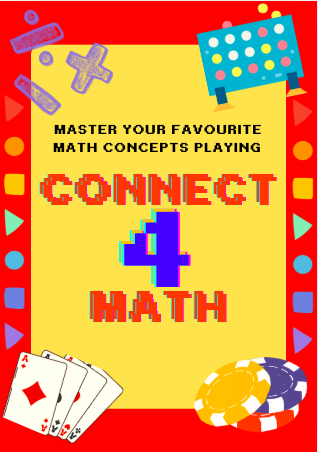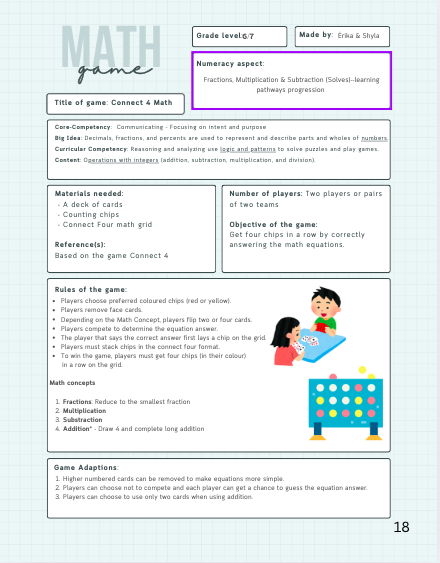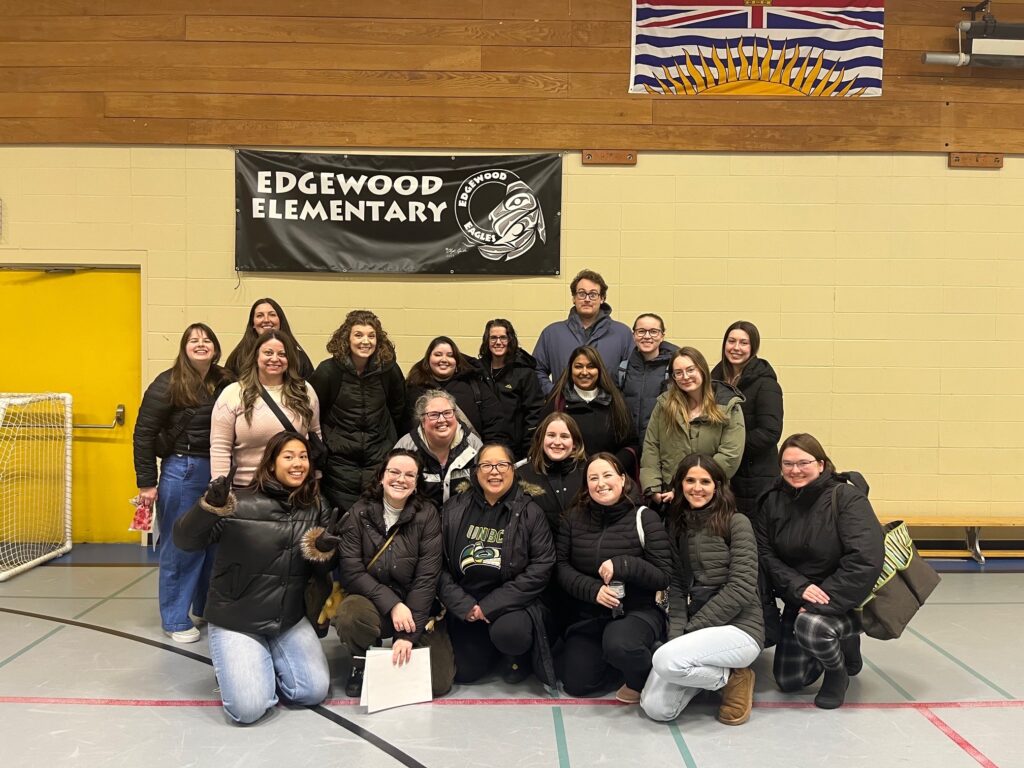Designing a Math Game for Numeracy Practice

As part of our Numeracy course, we were given the opportunity to participate in a Math Night at Edgewood Elementary. In preparation for the event, each pair of teacher candidates was assigned a grade level and asked to design a math game suited for that age group. My partner and I created a numeracy-based version of Connect 4. In this version, players flipped over playing cards (with face cards removed) and solved equations (multiplication, addition, subtraction etc.) using either two or four cards, depending on the difficulty level. The first player to solve the problem correctly earned the chance to place a chip on the Connect 4 grid. The aim remained the same: get four chips in a row to win. We kept the game fast-paced and interactive, encouraging both mental math and friendly competition.
We also designed posters to support the visual understanding of the game and made sure to prepare enough materials so that multiple players could join in. Our focus was on making the game approachable and easy to jump into, no matter what math background the student had.
Engaging with Students and Families
During the event, it was exciting to see how many students gravitated toward our station. Some of them returned multiple times throughout the evening and were fully immersed in the game each time. The energy was high, and it was clear that many of the students were motivated by the opportunity to “win,” but more importantly, they were practicing key numeracy skills along the way.
It was equally meaningful to see parents and caregivers participating alongside their children. Many walked around the gym with their children and engaged in the games with genuine interest. It added a collaborative, community-based feel to the night. The presence of families helped make the learning environment even more relaxed and supportive. There was no pressure to get the right answer immediately.

Making Math Feel Low-Stakes and Accessible
One of the most valuable aspects of this experience was realizing how accessible and low-stakes math can feel when it’s framed as a game. A lot of the anxiety that often comes with math in a classroom setting seemed to dissolve in the playful format of the Math Night. Students were still practicing math concepts and building number sense, but they were doing it in a way that felt enjoyable and natural.
For many students (and adults including myself), math can feel intimidating or frustrating, especially when tied to grades or timed assessments. Activities like this show that math doesn’t have to feel that way. Instead of focusing on correctness and speed, students were laughing, talking, and explaining their thinking out loud, all while reinforcing key math concepts.
Extending the Game to My Friday Class
After Math Night, I brought the Connect 4 game to the class I teach on Fridays. I introduced it during our regular math block as a choice activity for students who had finished their assigned work. It was immediately a hit! The students picked it up quickly and were excited to compete with one another using the math skills they had learned. Since then, the game has become a regular part of our math routine, and students often ask to play it as soon as they complete their tasks.
What stood out to me was how naturally the students used math vocabulary while playing. They were explaining their thinking, comparing answers, and correcting each other without any prompting.
Participating in Math Night at Edgewood Elementary gave me a chance to see how math can come alive in informal, community-based settings. It reminded me of the importance of making math fun, accessible, and rooted in real interaction. I look forward to creating more opportunities like this in the future, where students can build their numeracy skills through hands-on play and meaningful connections.
